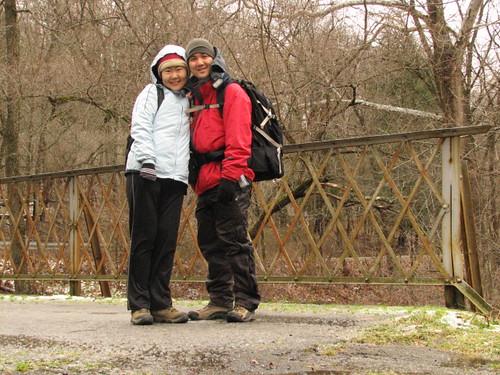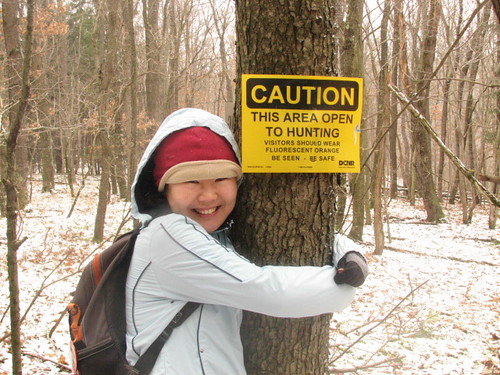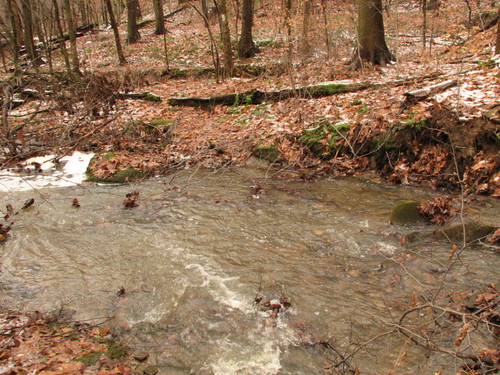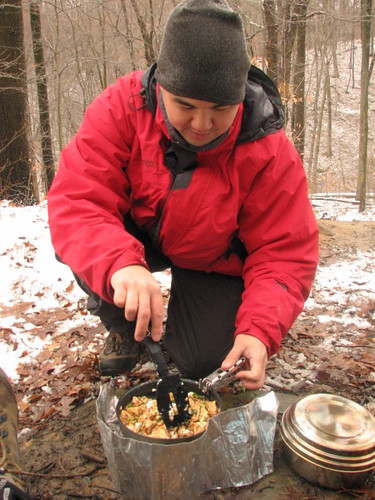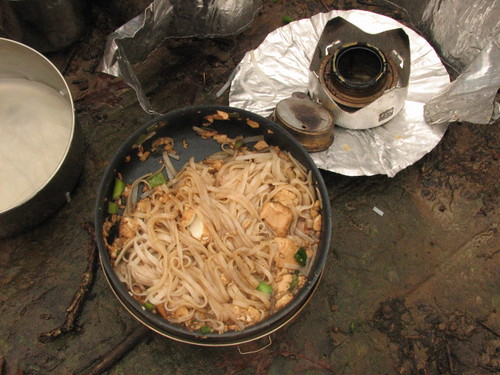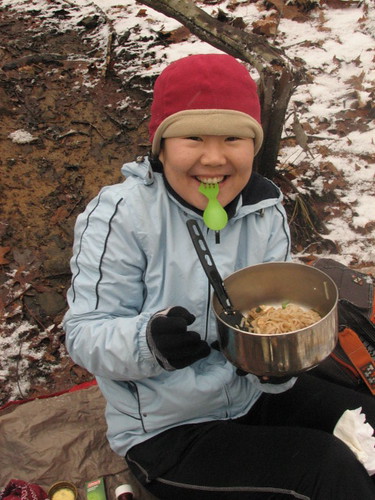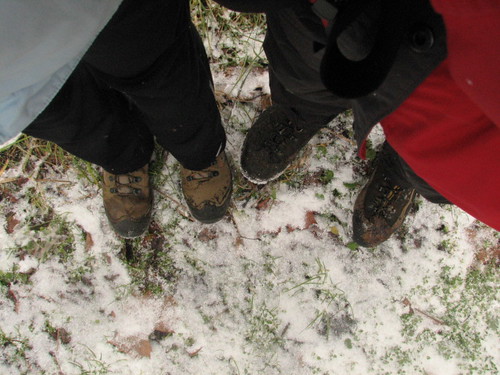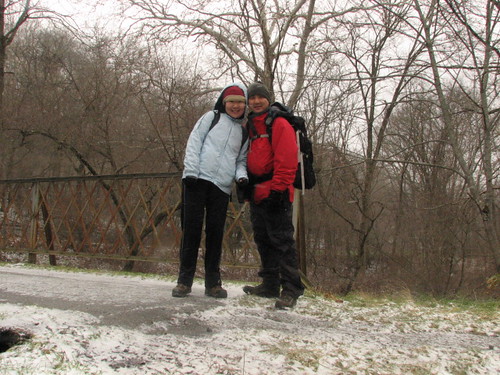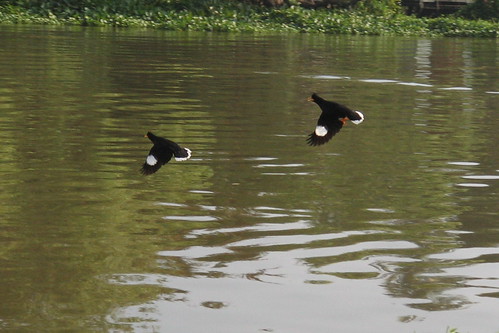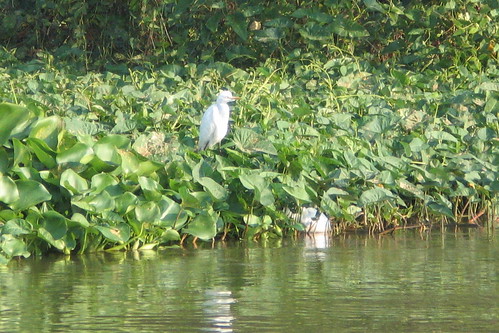Last week was my sister's wedding reception in Asia. Hence my trip to Thailand, to go for the reception. And since I don't like trips where I spend very large portions of time transiting from place to place, I skipped on the Taiwan segments and went straight to Thailand.
It has been a long time since I went on a pure photoshoot, where the goal was to take good pictures. A lot of what I've taken recently has been record shots (I was ... with ...) pictures, only little artistic value. One principle in artistic development is forced constraints, place restrictions on the technical aspects and use creativity and skill to compensate. The last time I went to Thailand I took a manual SLR, three lenses and a single-focal length P&S (because I need some record pictures, this is a vacation). On this trip, I took along a compact digital zoom (again, I need some normal pictures), but for fun, I took the rangefinder, used one lens, and two rolls of B&W film.
Now, there is this massive list of things to do. So not really much time for simple shooting. But there were a few times where I could practice (I suppose I could have done the PJ thing as well when going around town, but I only brought two rolls of film, so I saved them for the wedding.)
I had a big break in the schedule one morning when my sister and fiancee were getting studio pictures done. So, I took his parents and brother to Lumphini Park. Which is so different then my usual view of Bangkok (lots of loud traffic, shopping malls of various flavors, Buddhist temples).
This picture is of a bridge in Lumphini park by where we had lunch. I should have taken a couple of shots of the food cart where we got our lunch as well. This shot is probably not framed all that well. I should have moved it either left (to get more of the bridge) or right) to put the focus on the pond) where it is (with the right edge of the bridge in the midpoint of the frame) makes this almost one picture trying to be two.
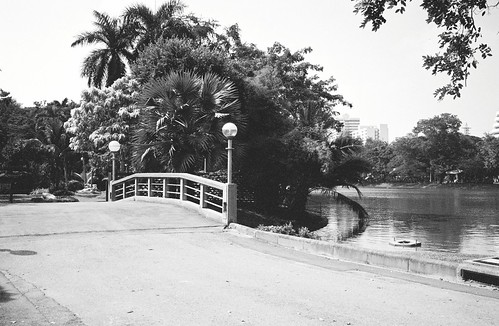
This is of Silom Center, taken from across a pond. It would have been better if I underexposed a stop, and made the buildings darker. I would have lost detail in the leaves, but the vegetation is only for framing anyway. Also, I should have taken this from a few feet to the left, as I could have avoided having a branch come down in the middle (if I really cared, this is easily removable in digital form).
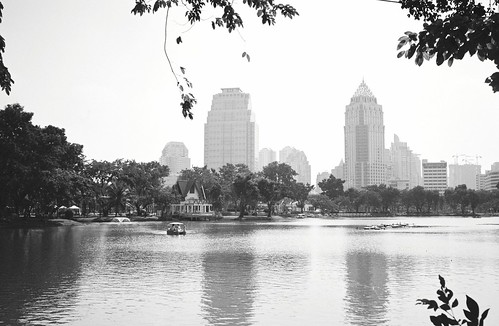
For the wedding pictures, like all weddings nowadays, there are many people running around with digital cameras taking hundreds of pictures. Including two of my cousins and my brother-in-laws brother (who all had instructions to take lots of pictures.) So my ~50 shots are not too important as far as quantity is concerned. I think I'm the only one to get this, and having a rushed bride and a slightly worried mother (probably thinking of all the things that have to be done) I think works.
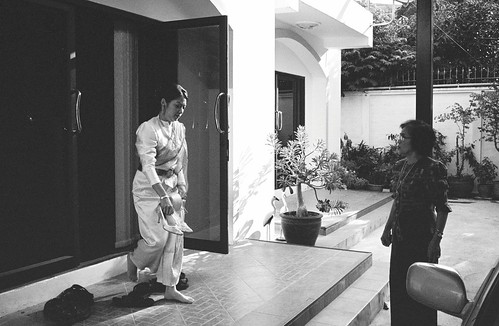
The odd thing is, this is not completely posed (not from want of trying by the couple and the other photographer). When they got the couple-on-the-bridge picture, B mentioned something about looking at a tree, so they could get a nice classic picture of the hopeful couple looking off into the future while standing at something. And I asked "which tree?" So he pointed out the tree.
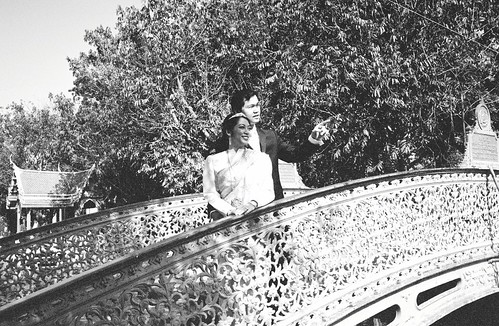
This almost worked. There were several photographers taking pictures of them and this little building at the Wat. And I had found this little break in the shrubs to the side. My sister is stepping down from posing, and B just noticed I was there.
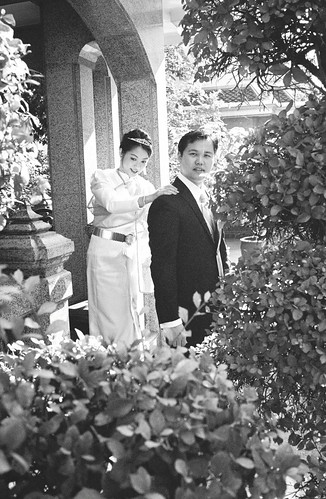
I liked this one. My grandmother (grandmother of the bride) is placing on the dots for a blessing on the groom. But my sister's eyes make the shot. It's nice using tools that get the picture exactly when you want it.
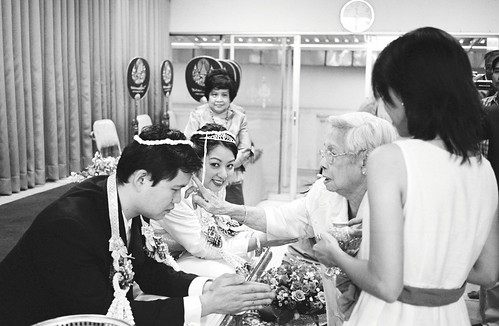
I thought that the people preparing the food should be photographed with their work. Just professional courtesy.
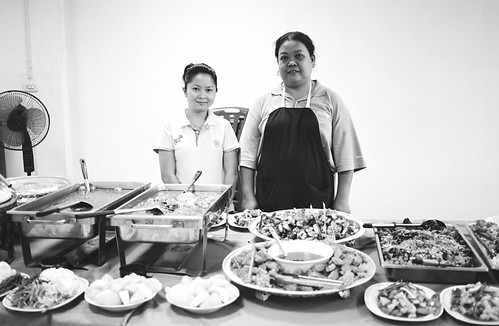
Standard repertoire for PJ style wedding photography. Couple taking a break talking to each other.
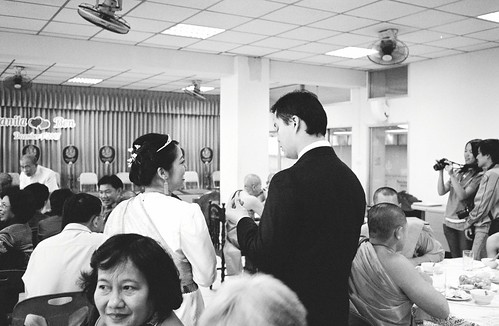
And they actually had time to eat (after distributing party favors. There, they take a basket around to the guests instead of having the party favors sitting at each seat)
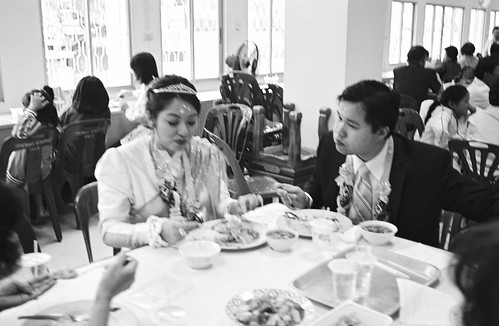
My grandmother was so happy that week. Yes, she sees her great-grandson about weekly, but I think she is this happy every time.
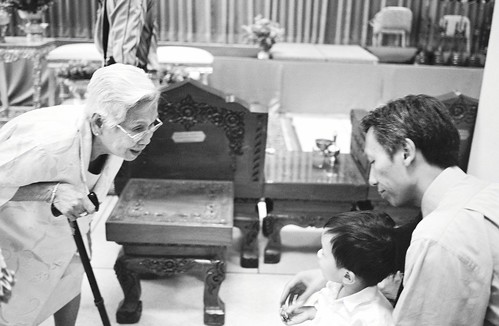
Another of the standard repertoire, child at end of wedding completely exhausted.
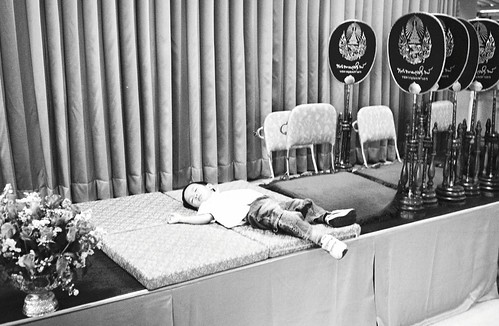
This is not at the wedding, but I thought the jackfruit had a nice texture that the black and white would bring out. And the film is not quite as completely washed out in the bright sunlight as the digital version.
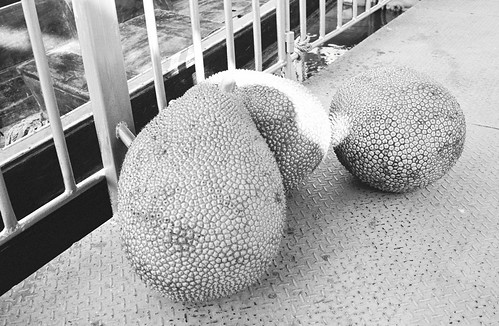
All pictures here taken with Voigtlander Bessa R with 35mm/2.5 compact lens and Kodak T400 CN Max film.
